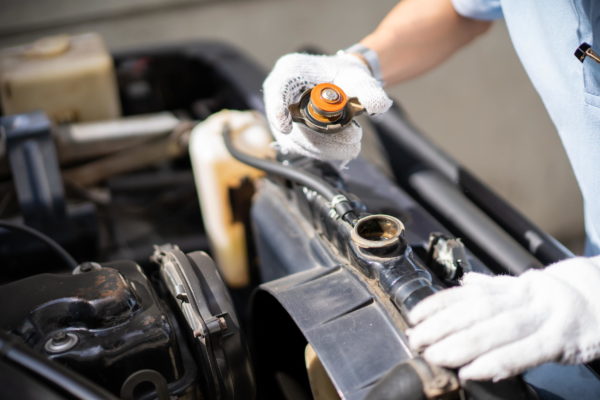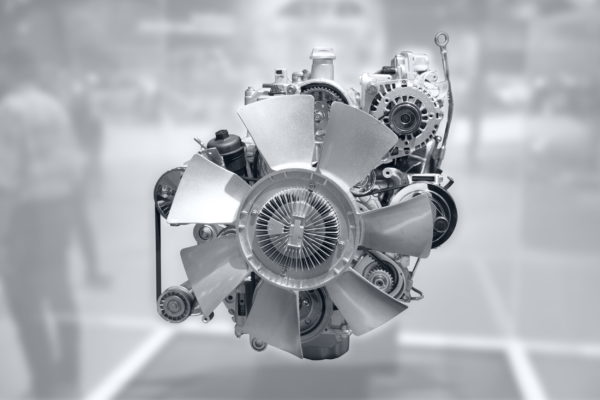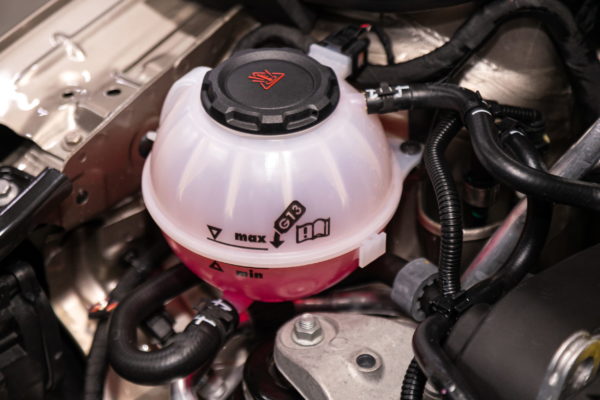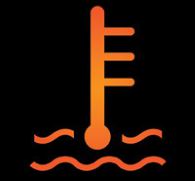What checks should you do on your engine’s cooling system?
The harder you work your engine, the more cooling it needs. All that exploding fuel creates heat, and your cooling system takes this heat away so that your engine operates within an optimal temperature range and your engine’s reliability is improved. The cooling system needs to work throughout the year – just because it’s cold outside doesn’t mean that the engine won’t overheat; your radiator can be blocked by snow, you could be driving at low speed which means that there’s less air across the radiator, or you might be using the air conditioning to quickly demist your windows.
There are several critical components to your cooling system which should be checked and maintained.
Radiator and radiator cap
The radiator contains coolant which is held in under pressure by the radiator cap (a good reason to never open the radiator cap when the engine is hot!) The pressure raises the boiling point of the coolant which gives it more cooling ability and more protection from overheating.

The radiator itself is a metal object with a large surface area composed of ‘fins’ which air passes over. The more surface area a radiator has, the more efficient it will be. However, radiators can get damaged and blocked. The blockage could be snow, leaves, dirt, or a piece of plastic, but it doesn’t take much of a blockage to start reducing the efficiency enough for the engine to overheat in hot temperatures.
Radiators can also start leaking. You should never put just water in your radiator except in an emergency as it has a low boiling point and can cause decay in the radiator itself as (unless it’s distilled water) it will leave deposits that are difficult to remove. If you live in a cold climate, water will freeze in the radiator causing damage to your hoses and the radiator itself. If you need to top up the coolant and you don’t have any coolant, mix it 50/50 with distilled water.
Fan and fan belt
There is a fan that will also blow air onto the radiator at slow speeds, and this is controlled by a fan belt (you’ll undoubtedly have heard the high-pitched squeal of a fan belt that is on its way out). If the fan belt snaps, the fan doesn’t work and the engine doesn’t get as much cooling when idling or at low speeds. If you start to hear your fan belt making a noise (most commonly if you start the engine from cold and turn on the air conditioning), have it replaced.

Coolant
Coolant needs changing usually at around 100,000km, but it varies per car. It’s important that you add the correct coolant as recommended by the manufacturer. The coolant’s colour should be bright, not dull, murky or rusty; they are usually green or orange. Check this every couple of months. Remember, never work on an engine that is hot.

Water pump
This historically-named water pump moves coolant around the system, although in the early days it moved water. They can seize or leak.
Hoses
Hoses carry the coolant around the engine. They can degrade and start to leak. Hose clamps must be tight or hoses can blow off their connection points.
Dashboard warnings

Vehicles have warning lights and gauges on the dashboard to indicate temperature or when the recommended temperature is exceeded.
If the temperature gets too hot, the vehicle might enter ‘limp mode’ where performance is reduced, the engine could seize, or hoses or the radiator could leak or burst.
Watch for any indication that the temperature is approaching the red zone. Stop the engine and wait until it cools down if it does, then get the cooling system checked.
- Understanding the National Standards for Riding Mopeds and Motorcycles
- Livestock Transport Rules UK: A Complete Guide to Animal Transportation Requirements
- The Role of Safety Advisers in Dangerous Goods Transport
- Sustainable Driving: Reducing Your Environmental Impact on the Road
- Developing Effective Lesson Plans for Driver Training
- UK Agricultural Vehicle Registration and Tax Relief
- Challenges of Transporting Radioactive Materials (Class 7)
- Exemptions and support for Clean Air Zone charges
- Navigating Legal Requirements: The UK Motorcycle Licensing Rules
- Safe Transportation of Agricultural Chemicals and Hazardous Materials
- Innovations in Vehicle Construction for ADR Compliance
- Motorcycle Recovery Operations: How to Recovery a Broken Down Motorbike
- Alternative Fuels in Agricultural Vehicles
- Carriage of Dangerous Solids in Bulk Containers
- Understanding Limited Quantity Exemptions in ADR